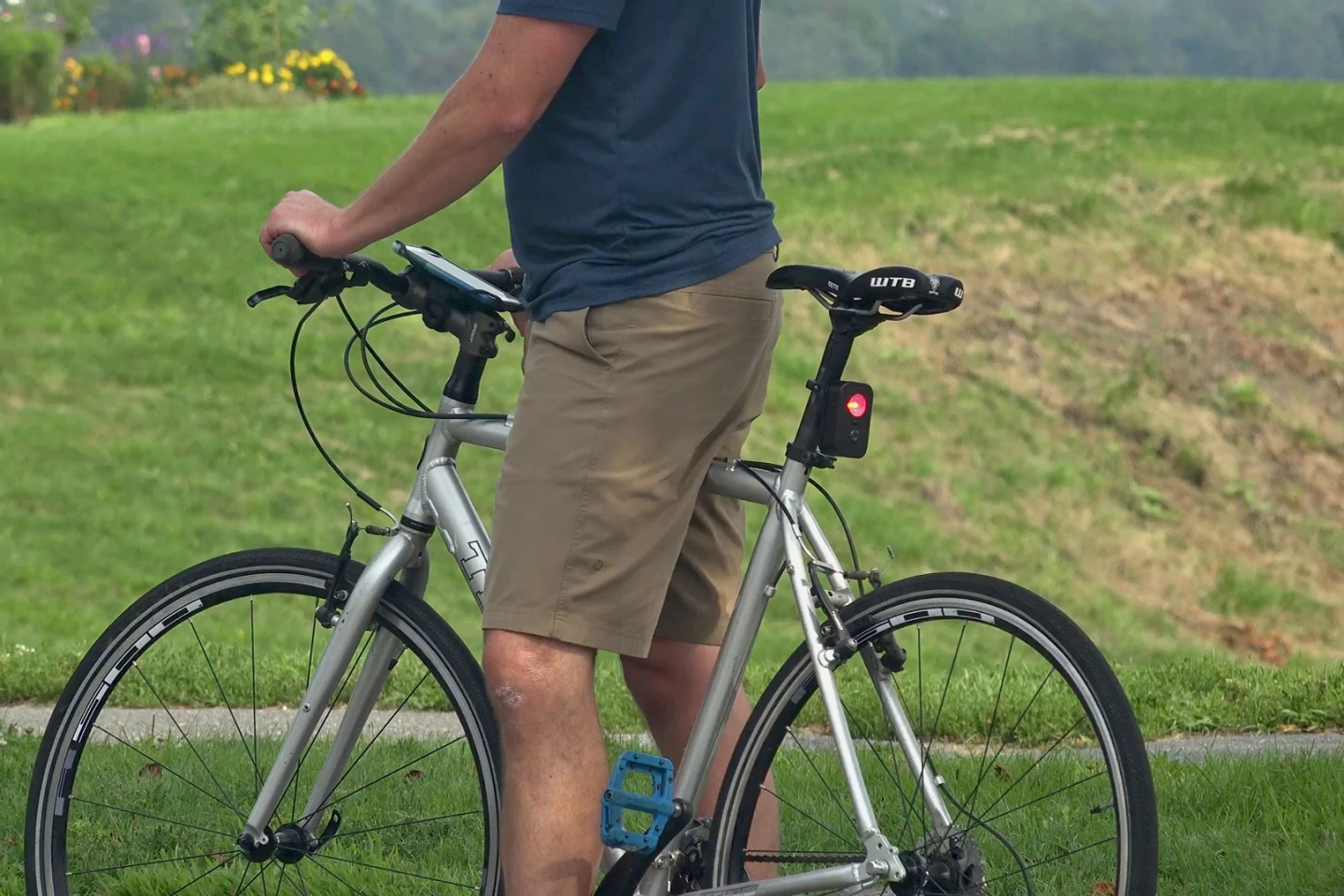If you were asked to think of things that may be made obsolete by AI, bicycle radar systems probably wouldn't be at the top of the list. That could soon be the case, however, if the Survue lives up to its maker's claims.
Manufactured by companies such as Garmin and Trek, existing radar systems are designed to warn cyclists of motorized vehicles that are quickly approaching from behind. They typically take the form of a rear-facing seatpost- or saddle-mounted module that sends out radar pulses which echo off any vehicles within a set distance behind the bike.
The module receives those echoes and analyzes them to determine how far away each vehicle is, and how fast it's closing in. Users are alerted to potentially dangerous vehicles by an audible alarm on their wirelessly connected cycling computer or smartphone, which also provides a visual display on its screen.
According to Maine-based entrepreneur Josh Fox, however, such systems focus too much on the speed of approaching vehicles while not accounting for other factors. That's where the Survue comes in.
Fox first got the idea for the device seven years ago. At that time he regularly towed his infant daughter in a bike trailer while cycling, plus he was mentoring a high school robotics team that was exploring the use of computer vision technology for estimating distance to targets. Fast-forward to 2024, and the Survue has hit Kickstarter.

The radar-less device utilizes a camera and AI algorithms to not only spot and gauge the speed/location of rear-approaching vehicles, but also to determine the type of vehicle and its projected trajectory.
If the vehicle is deemed to pose a collision hazard, the user is warned via both an audible alarm on the device and an (optional) iOS/Android app on their handlebar-mounted smartphone. That app also displays the speed, location and trajectory of the vehicle relative to the bike.
At the same time, the Survue automatically records video of the approaching vehicle on an included MicroSD card, in case the footage is subsequently needed in legal proceedings. The device also triggers its integrated 80-lumen tail light to start flashing faster, to alert the driver to the cyclist's presence.

Tipping the scales at 125 g (4.4 oz), the Survue has a claimed runtime of six hours per battery-charge, and is reportedly capable of detecting vehicles from a distance of up to 110 meters (361 ft). Assuming it reaches production, a pledge of US$215 will get you one – the planned retail price is $329.
It should be mentioned that Fox isn't the only person to have had the idea for an AI-based rear-facing vehicle warning system. US startup Velo.AI is already selling its larger and heavier dual-tail-light Copilot for $399 – although the company is currently out of stock. AlpsAlpine also manufactures a device called the RS 1000, which is presently listed as being unavailable.
The Survue is demonstrated in the following video.
Sources: Kickstarter, Survue
Note: New Atlas may earn commission from purchases made via links.






